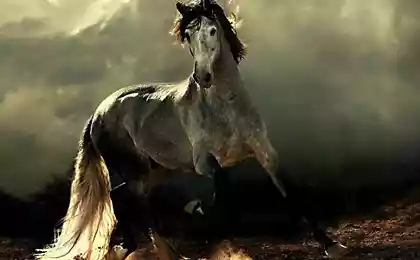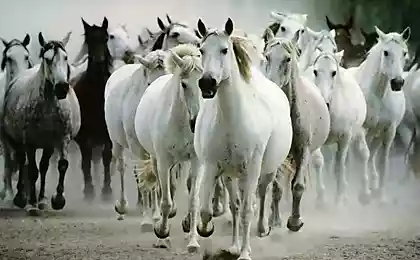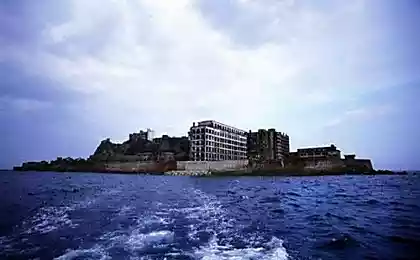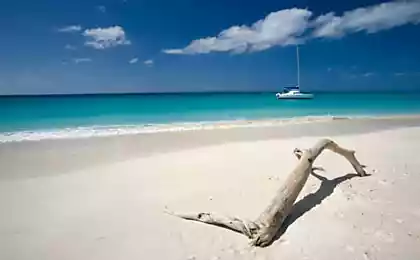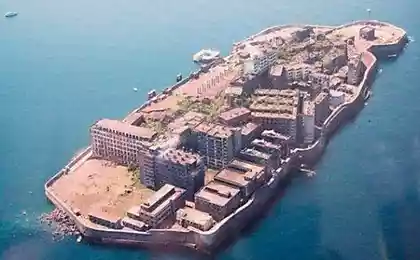1107
Horse Island Water (Rostov Reserve)
One blogger told an interesting story of the Rostov reserve, home to the wonderful animals.

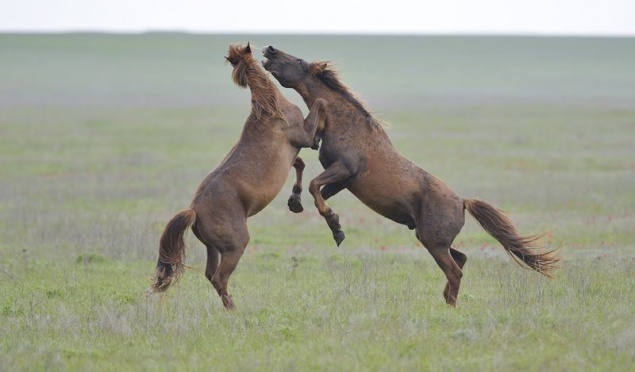
All my life I keep horses. Now I wait for the Bryansk forest foursome lazy pupils, who only think how not to miss the morning feeding oats or break the rotten fence old woman, a neighbor and go to bed. The wife cuts his hooves, combing manes and tails, teaches all sorts of tricks. But here, in the Rostov reserve, very different from the behavior of the horse! And the tricks they still are! Watching them is no less interesting than the bears in Kamchatka, especially now, in the spring, when raging horse love passion. It is the largest and most long-lived of the known in Russia population of feral horses, besides living for sixty years in isolation on the island surrounded by salt water lake Manych-Gudilo. Water Island - the largest in the Manych-Gudilo. Its length is 12 km, width up to 3, 5 km. There is not a single tree or shrub. This hilly steppe. The island was formed in 1953 when, after the construction Nevinnomysk channel changed the hydrological regime of the Manych. Raising the water level was unexpected for livestock, and they did not manage to overtake cattle on the continent by land. Sheep transported on boats and some horses were Don breed on the island for the winter. In the spring they failed to catch - the horse had a taste of freedom. They became the ancestors of free herd. Before the formation of the Rostov reserve population of horses was small, it ranged from a few tens of heads. Local farm shipped here for the summer ferry sheep, which did well with polupresnoy water that they drank and the horses. Periodic attempts trapping and shooting of horses developed fear of humans and technology. Horses were able to self-adjust to life in the arid steppe: year-round use pasture, living without shelter. By the early nineties, people have ceased to deliver to the island sheep wells are blocked, and the horses were left to fend for themselves. In 1995, he founded the Rostov goszapovednik. Water Island was in its composition. Inspectors reserve stop poaching horses. In the early years of the reserve horse wary of people. In his first visit to the Rostov Reserve in late nineties, I did not even managed to photograph them. Herd would not let a person closer than a kilometer. Towards the people ran stallion-leader, who behaved aggressively, to move closer to him did not want to. Reserve staff conducted from the mainland to the island half a kilometer pipe water disposals and made the watering area. The number of horses began to grow rapidly. In 1995, the island inhabited by 67 individuals, in 2006 their number exceeded four hundred. It turned out to limit food resources of the island. In winter 2009/10, more than half the horses were killed. Some of the animals, for the first time in history has managed to escape from starvation, Manych-Gudilo go on the ice and go to the neighboring Kalmykia. The remaining saved organized people dressing. Reserve now tries to keep the number of horses in the range of 100 - 150 animals by trapping of the horse-teens. Who lives here 150 horses.

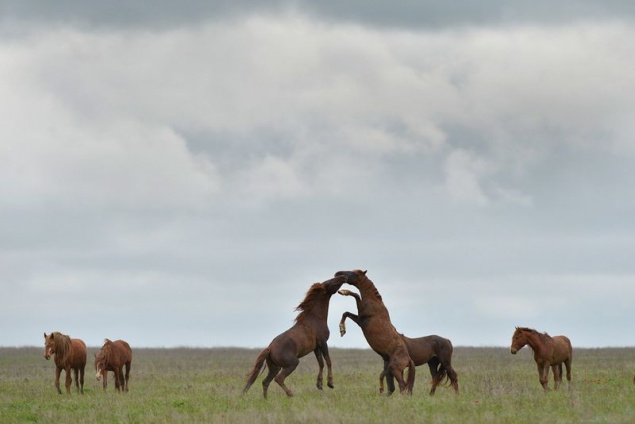

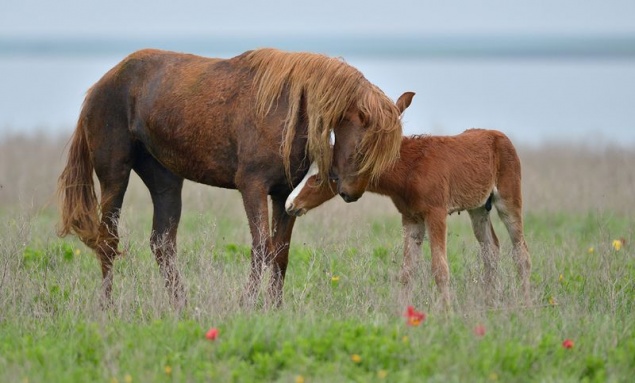

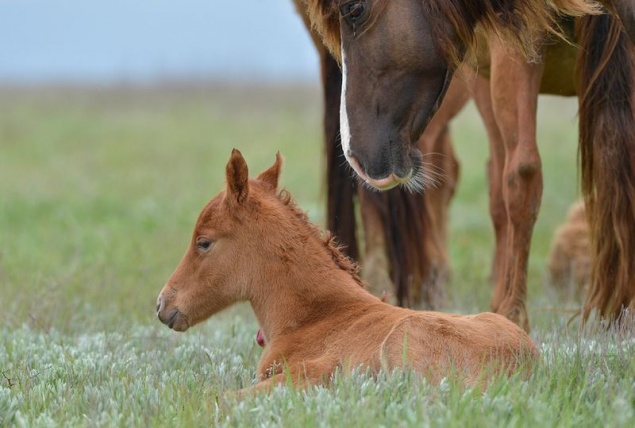


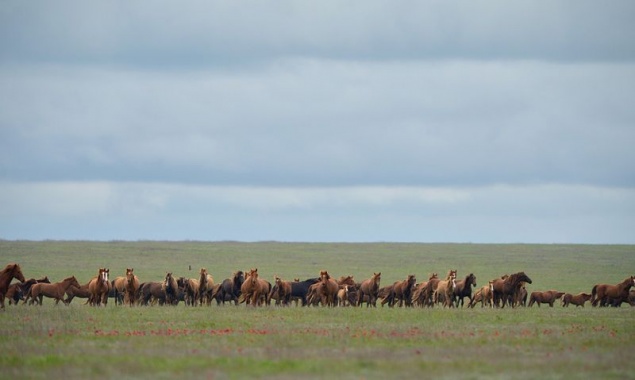
Source: shpilenok.livejournal.com


All my life I keep horses. Now I wait for the Bryansk forest foursome lazy pupils, who only think how not to miss the morning feeding oats or break the rotten fence old woman, a neighbor and go to bed. The wife cuts his hooves, combing manes and tails, teaches all sorts of tricks. But here, in the Rostov reserve, very different from the behavior of the horse! And the tricks they still are! Watching them is no less interesting than the bears in Kamchatka, especially now, in the spring, when raging horse love passion. It is the largest and most long-lived of the known in Russia population of feral horses, besides living for sixty years in isolation on the island surrounded by salt water lake Manych-Gudilo. Water Island - the largest in the Manych-Gudilo. Its length is 12 km, width up to 3, 5 km. There is not a single tree or shrub. This hilly steppe. The island was formed in 1953 when, after the construction Nevinnomysk channel changed the hydrological regime of the Manych. Raising the water level was unexpected for livestock, and they did not manage to overtake cattle on the continent by land. Sheep transported on boats and some horses were Don breed on the island for the winter. In the spring they failed to catch - the horse had a taste of freedom. They became the ancestors of free herd. Before the formation of the Rostov reserve population of horses was small, it ranged from a few tens of heads. Local farm shipped here for the summer ferry sheep, which did well with polupresnoy water that they drank and the horses. Periodic attempts trapping and shooting of horses developed fear of humans and technology. Horses were able to self-adjust to life in the arid steppe: year-round use pasture, living without shelter. By the early nineties, people have ceased to deliver to the island sheep wells are blocked, and the horses were left to fend for themselves. In 1995, he founded the Rostov goszapovednik. Water Island was in its composition. Inspectors reserve stop poaching horses. In the early years of the reserve horse wary of people. In his first visit to the Rostov Reserve in late nineties, I did not even managed to photograph them. Herd would not let a person closer than a kilometer. Towards the people ran stallion-leader, who behaved aggressively, to move closer to him did not want to. Reserve staff conducted from the mainland to the island half a kilometer pipe water disposals and made the watering area. The number of horses began to grow rapidly. In 1995, the island inhabited by 67 individuals, in 2006 their number exceeded four hundred. It turned out to limit food resources of the island. In winter 2009/10, more than half the horses were killed. Some of the animals, for the first time in history has managed to escape from starvation, Manych-Gudilo go on the ice and go to the neighboring Kalmykia. The remaining saved organized people dressing. Reserve now tries to keep the number of horses in the range of 100 - 150 animals by trapping of the horse-teens. Who lives here 150 horses.









Source: shpilenok.livejournal.com

